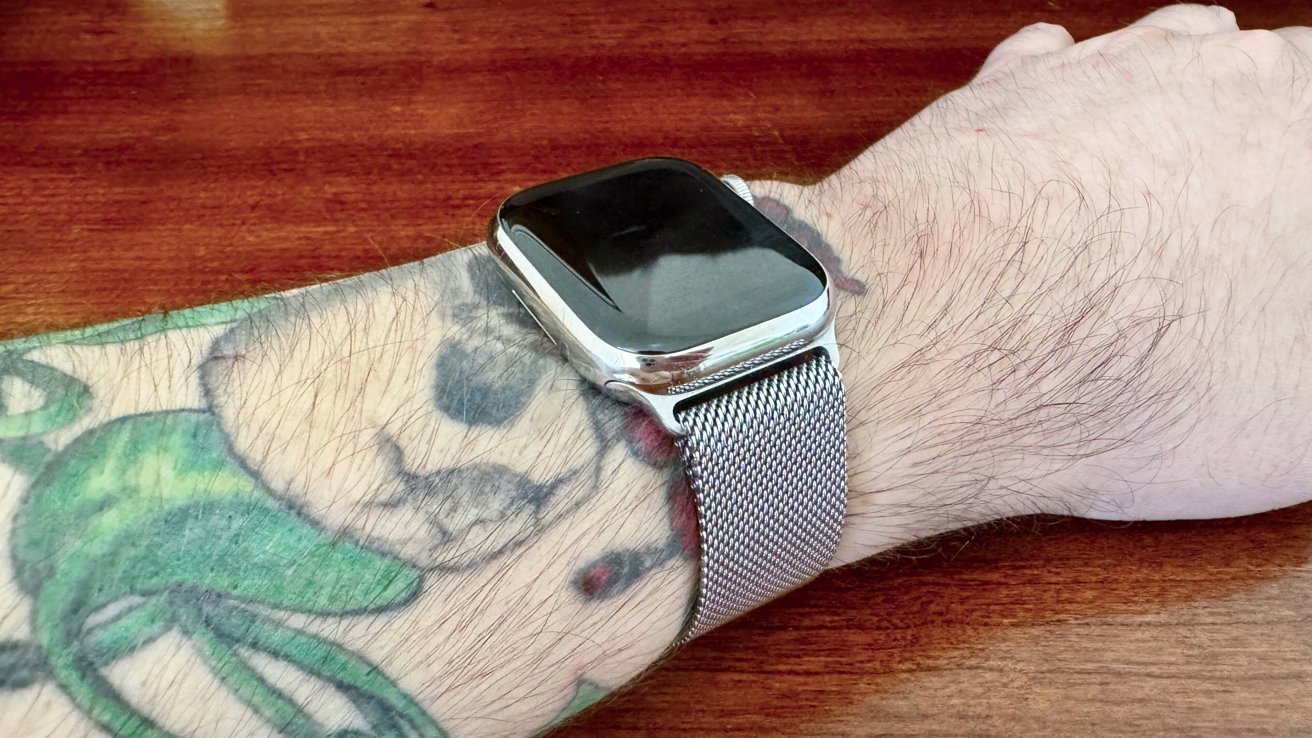If you’re thinking about getting a wrist tattoo, your Apple Watch may not be able to detect your pulse — but it’s fixable with some money and pain.
The Apple Watch, like many other wrist wearables, relies on light to gather data points about a user’s heart activity. However, users with tattoos on their wrist can sometimes find that the sensor doesn’t work all the time.
In a post to TikTok, a person is seen undergoing a laser tattoo removal procedure on their wrist. A tattoo sleeve covers the wrist, which causes the Apple Watch sensor to fail.
The laser treatment is performed on the outside of the user’s wrist within a temporarily drawn circle. The 15-second clip shows part of the procedure, with the tattoo being vaporized by the laser.
Posted by cosmetic nurse Maryam Khatibi on May 24, the video has so far garnered 3.5 million views on the social media service to date.
Explaining to Newsweek, Khatibi said that the patient had four sessions to remove the tattoo, costing 380 euros ($418).
Blocked light
This is a problem that some Apple Watch users have encountered for quite some time, with reports on the matter spanning almost as long as the Apple Watch has existed.
The Apple Watch monitors the user’s pulse and blood oxygen level using a process known as photolethysmography. By shining infrared and green lights into the skin, the sensors in the Apple Watch can detect blood flow.
As red blood can reflect red light and absorb green light, by using infrared and green LEDs and photodiodes, the Apple Watch can detect the amount of blood flow in the wrist at that moment. Thanks to green light absorption being greater with flows from a heartbeat, the Apple Watch can also detect a user’s pulse.
Infrared is usually used for heart rate notifications and for background monitoring. Green is used to measure the heart rate during workouts and Breathe sessions.
Apple does warn that “Permanent or temporary changes to your skin, such as some tattoos, can also impact the performance of the heart rate sensor.” It’s explained that the ink, pattern, and saturation of a tattoo can block light from reaching the sensor, which can interfere with readings.
There are some ways to work around a tattoo, such as wearing the Apple Watch on the opposite wrist if that arm doesn’t have an interfering tattoo. It’s also possible to connect the Apple Watch to external heart rate monitors, including Bluetooth chest straps, for monitoring during workouts.





